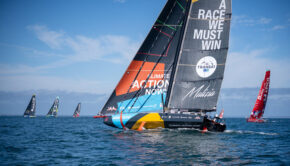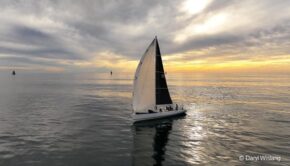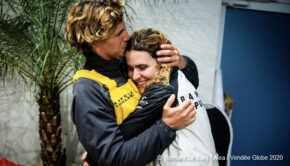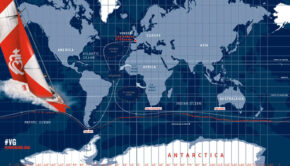Improving on Mark One Eyeball
Published on December 7th, 2022
It would seem to be a recipe for disaster, as shorthanded racing makes it difficult to maintain a proper look-out to avoid collision. With boats going faster than ever before, and additional foils in the grand prix classes increasing the probability of trouble, the roulette wheel is not tilted in favor of the sailor.
Marcus Hutchinson, whose profession includes managing IMOCA racing campaigns, shares the current state of electronic assistance for detecting trouble:
Other than the Mk-1 eyeball (aka, the unaided human eye), radar, and AIS, the IMOCA Class has become an early adopter of a system called OSCAR.
OSCAR is an AI (artificial intelligence) driven masthead camera system (visual light and infrared) that looks in front of the boat and sends images to a box which compares everything it sees with its own database of debris and other objects that are not sea, waves, oil slicks, whitewater, etc.
This system is constantly evolving, as the more boats that use it and scan the seas, the better the database gets as the machine keeps learning.
The 100-foot Ultimes were the first adaptors followed by the 60-foot IMOCAs a few years ago, with incentive from insurance companies to utilize it.
So what does it do when it sees something like a log or a buoy? Alarm bells ring and lights flash to try and wake up the skipper if he is asleep.
For now the system doesn’t take control of the boat through the autopilot to avoid the danger, as there remain significant risks – particularly with multihulls – to sharply turn the wrong way or make proper sail adjustment.
However, there is a second edition currently being developed by a collaboration of the OSCAR people (now called SEA.AI) and one of the outfits that develops super sophisticated autopilots (PIXEL). I recently attended a presentation of the development program to move these two parts of the puzzle closer together.
Improving a warning system is the subject of a huge research effort being funded in part by grants and university research team funding. It is likely we will see this more sophisticated system available for the IMOCAs from the middle of 2024, which will be ideally timed in advance of the next Vendee Globe race.









 We’ll keep your information safe.
We’ll keep your information safe.